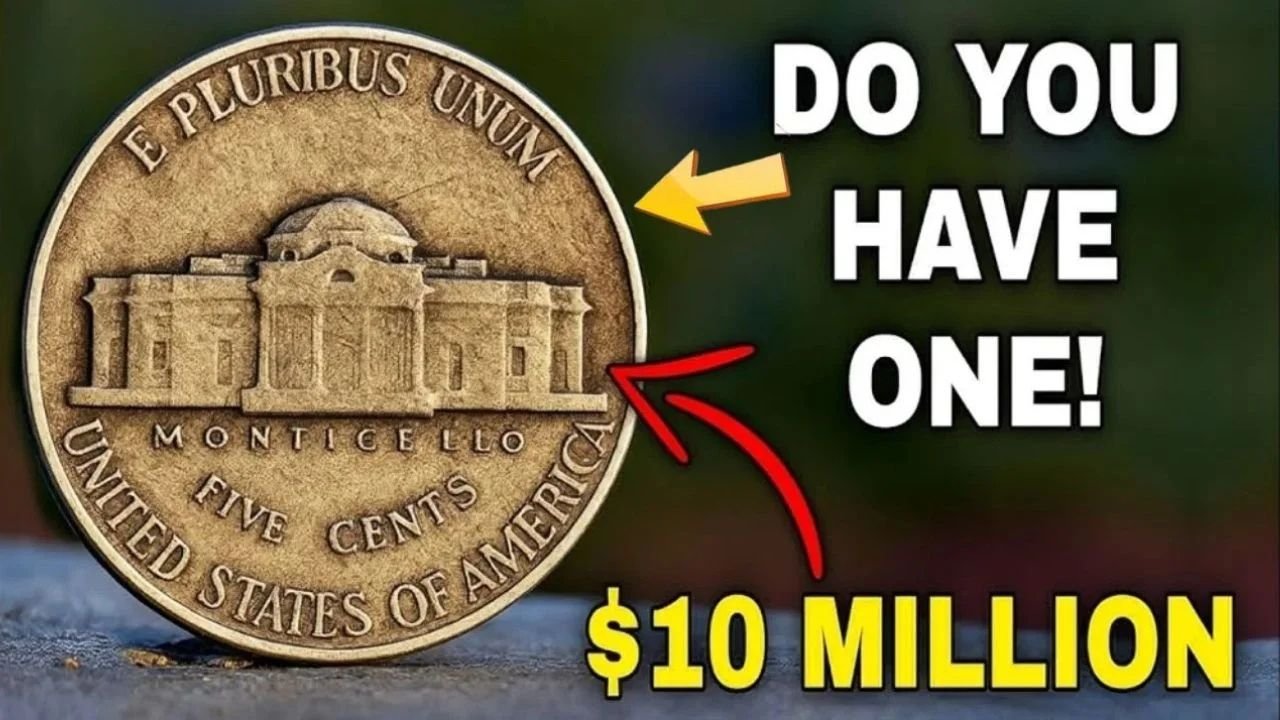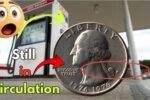How a War-Era Jefferson Nickel: During World War II, nickel—an essential metal for both civilian and military manufacturing—became critically needed for the war effort. In response, the U.S. Mint suspended the use of nickel in coinage from mid-1942 through the end of 1945 and replaced it with a silver-copper-manganese alloy. The Jefferson nickel, introduced in 1938, thus entered a unique chapter in numismatic history, transitioning into a “war nickel.” Over time, this wartime variant, particularly with rare minting errors or high grades of preservation, has become among the most valuable collectible coins today.
The Composition Switch and Its Significance
The sudden change in composition wasn’t just a material shift—from the pre-1942 standard of 75 percent copper and 25 percent nickel to a wartime alloy of 56 percent copper, 35 percent silver, and 9 percent manganese—it was also symbolic. The silver content piqued collectors’ curiosity, and the look and feel of the coins stood apart immediately. Minting methods had to adapt, and collectors now view these pieces as physical reflections of national crisis adaptation.
Rarity and Mint Marks That Elevated Value
Not all war nickels are created equal. Specific mint marks (such as the large “P,” “D,” or “S” above Monticello on the reverse) indicate where they were struck—Philadelphia, Denver, or San Francisco. Certain mint-mark combinations and limited production quantities make some examples scarce. A war nickel with exceptionally high grading, a sought-after mint mark, or a notable error can command strikingly high prices at auction, drawing attention from serious numismatists.
Extraordinary Condition: Grading Matters
Although millions of war nickels were produced, very few have survived in pristine, uncirculated condition. Grading services like PCGS or NGC assess coins on their state of preservation, and those that earn a grade of MS 67 or higher often reach premium prices. Collectors prize such specimens for their sharp details, full mint luster, and lack of wear—making them rare survivors from an era of heavy coin circulation.
The Coin That Broke Records
In a landmark sale, a 1943-S war nickel graded MS 68 by a leading grading service fetched a record sum at auction. This sale made headlines: a modest wartime coin, once a few cents of pocket change, sold for tens of thousands of dollars. That event turned public and collector attention sharply toward war nickels, establishing their status as modern numismatic legends.
How a War-Era Jefferson Nickel Became One of America’s Most Valuable Coins Now!
| Factor | Explanation |
|---|---|
| Wartime Metal Composition | Silver-alloy made these nickels stand out among standard copper-nickel issues. |
| Mint-Mark Variations | Rare mint-mark combinations (P, D, S) significantly influence rarity and desirability. |
| Grading Condition | High grades (MS 67+) are uncommon and drive up collectibility and auction prices. |
| Record-Setting Sale | A single high-grade example sold for a premium, shining a spotlight on war nickels’ value. |
Why the Table Matters
This table distills the core reasons why a wartime Jefferson nickel today can be so valuable. It outlines how material changes, minting circumstances, exceptional preservation, and standout auctions all contribute to the coin’s modern appeal. Each factor alone carries weight, but combined, they create the compelling narrative that drives high valuations.
Collectors’ Passion: Beyond Metal and Money
Collectors aren’t just chasing value—they’re preserving history. A war-era Jefferson nickel is more than a coin; it’s a time capsule from a pivotal period. Holding one connects a person to the resource shortages, production shifts, and national spirit of the 1940s. This emotional resonance, coupled with rarity and condition, helps fuel demand among both casual hobbyists and seasoned investors.
The Allure of the Exceptional: Auction Fever
When a coin surfaces in near-perfect condition, auction houses light up. The excitement around seeing a war nickel achieve unprecedented prices creates a feedback loop: media coverage sparks interest, interest brings more collectors into the market, and new entrants elevate prices further. That one trophy coin defines the ceiling others aspire to reach.
Small FAQs
What makes war-era nickels different from others?
They were minted with a wartime silver alloy instead of the usual copper-nickel mix to conserve nickel for military use.
How can you tell a war nickel apart?
Look for the mint mark (P, D, or S) above Monticello on the reverse and recognize the shinier, silvery tone from the silver content.
Why are some war nickels worth so much?
Their value stems from rarity, mint-mark scarcity, exceptional condition (high grading), and notable auction results that set pricing benchmarks.
Where can I verify a nickel’s grade or authenticity?
Reputable third-party grading services like PCGS (Professional Coin Grading Service) or NGC (Numismatic Guaranty Corporation) authenticate and grade coins.




